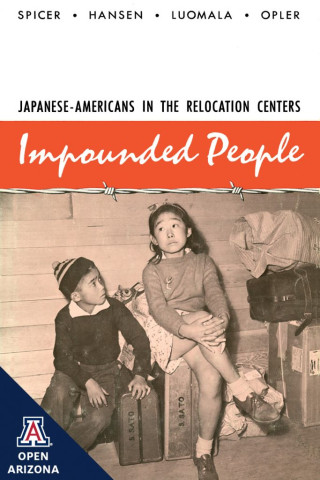Anthropologist Edward Spicer coauthored Impounded People: Japanese-Americans in the Relocation Centers after living and working among Japanese Americans detained in Arizona’s Poston concentration camp (officially called the Poston War Relocation Center). While Spicer is known primarily for his scholarship on Indigenous peoples of the U.S.-Mexico borderlands, Impounded People was a collaborative effort born out of his work as a community analyst for the War Relocation Authority (WRA) during World War II. The community analyst program marked a critical moment in the field of anthropology, as it occurred during the formative stages of the applied anthropology subfield, which moves beyond observation to the use of ethnographic findings to inform policy. This essay examines Spicer’s role in the community analyst program and his influence on applied anthropology, as well as some of the conundrums that emerged through this work.
Anthropologists and World War II Incarceration
When the U.S. government incarcerated its own citizens and residents during World War II, it acted out of what is now formally recognized as “racial prejudice, wartime hysteria and a lack of political leadership.” But the wisdom that has come with hindsight did nothing to prevent 126,000 Japanese American lives from being upended during World War II. In the wake of the attack on Pearl Harbor, men, women, and children—many of whom had lived on the West Coast for their entire lives—were subjected to searches, arrests, curfews, and forced removal from their homes. They were imprisoned, first in poorly equipped temporary facilities, and later in concentration camps in remote deserts, mountain areas, and swamplands across the United States.
During the first year of incarceration, unrest at the Manzanar and Poston concentration camps—in California and Arizona, respectively—spurred the WRA to employ social scientists to study what then director Dillon Myer called a “trouble pattern.” Anthropologist John F. Embree was brought on as a consultant and was later appointed to run an experimental new program that focused primarily on documenting “causes of friction and social disturbances,” “limited acceptance” of resettlement, and “reactions to new or proposed initiatives” among prisoners.
